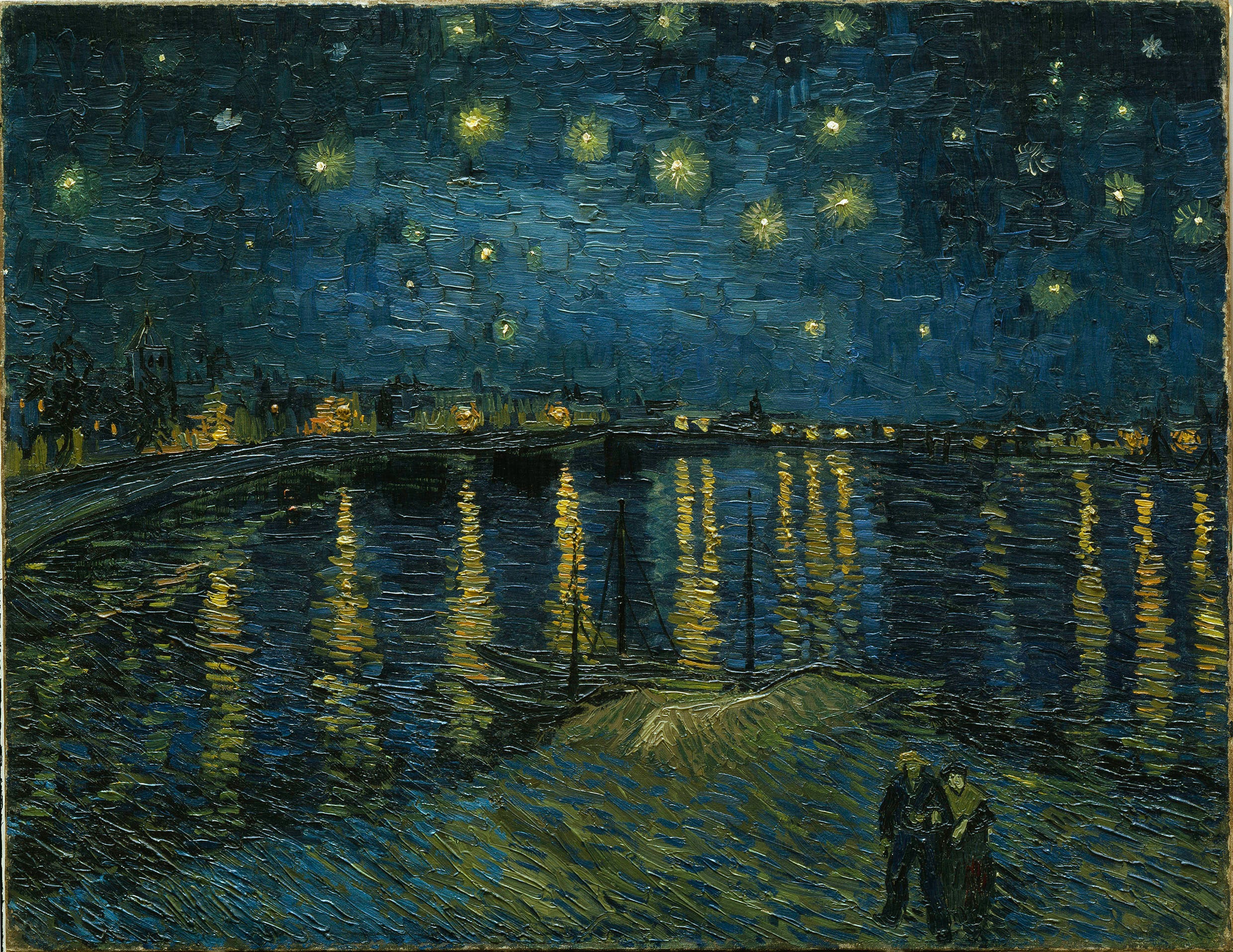The Independent's journalism is supported by our readers. When you purchase through links on our site, we may earn commission.
Van Gogh – Poets and Lovers review: A show to make your heart explode with joy
The National Gallery clearly wanted its first ever major Van Gogh show to be unmissable – and it is

It happened to me in Room Two. There are six in the National Gallery’s first ever major Van Gogh exhibition – no less than 61 works painstakingly assembled from museums and private collections around the world. All are from the period 1888-90, after the painter moved to Arles, in the south of France, and before he moved back to Auvers-sur-Oise, on the outskirts of Paris, in the few brief months before his death, aged 37, in July 1890, from a self-inflicted gunshot wound. Many were painted during the year the artist spent in an asylum at Saint-Rémy-de-Provence, outside Arles. Taken together, they represent the great flowering of Van Gogh’s genius, and there are several acknowledged masterpieces here. The show has a theme, of course, which we’ll get to – but first, sooner or later, if you visit this exhibition, it’ll likely happen to you, too. You’ll be looking at a painting and your heart will simply explode with joy.
It happened to me while I stared at The Garden of the Asylum at Saint-Rémy (1889), one of the first works that Van Gogh painted after he voluntarily committed himself for treatment there in May 1889, following months of unstable mental health after he sliced off his ear with a razor in December 1888. Van Gogh was confined to his room and the hospital gardens at the time, but found delight in the overgrown sprawl of trees, shrubs, weeds and grasses he discovered there. The garden was in bloom when he arrived and this painting of a shady corner, without people, is both restful and bursting with colour. In the same room is Iris (1889), which was painted on cardboard because the artist had run out of canvas. It’s a marvel.
Van Gogh’s capacity to provoke intense emotion in the viewer is almost unique in the Western canon. In recent years, it has seemed at times as if his reputation has been on the wane, even among the Post-Impressionists: Cézanne, one hears, was the greater artist; Gauguin the more influential. It is true perhaps that neither has suffered from overfamiliarity in the way that Van Gogh has done; one wonders if the ubiquity of works such as Sunflowers and Starry Night has begun to blind us to the depth of his talent.
Van Gogh was a hugely productive artist, and there are works here, such as The Large Plane Trees – Road Menders at Saint-Rémy (1889) or The Green Vineyard (1888), borrowed from Cleveland, Ohio and the village of Otterlo in the Netherlands respectively, that feel utterly fresh. Van Gogh paints with such heartfelt passion that the canvases, especially the works of these years, when he was at his most anguished and plagued by a sense of failure, communicate something that feels transcendent, almost beyond talk of composition and style.
Close up, for instance, it is possible to see how his brushwork evolved from “divisionism”, in which the paint is applied directly, unblended, so as not to mute the intensity of the original colour from the tube. Yet here, in the presence of those broken brush strokes and thick globs of paint, one is struck only by how the works come to life with a vividness that is impossible to convey in book plates and reproductions. The smear of white to the right of the tree in The Sower (1888) feels almost accidental, the glowing stars in Starry Night Over the Rhône (1888) twinkle above a sea so dark and blue that the impasto layers might be fathoms deep.

The exhibition’s theme, Poets and Lovers, explores how Van Gogh used his poetic imagination to transform reality. He abandons formal perspective in the gorgeous The Bedroom (1888), turns a drinking companion into a mythical being (with green-hued skin) in The Lover – Portrait of Lieutenant Milliet (1888), and the proprietress of the local café into a regional archetype in two versions of The Arlésienne (1890). The show also proudly displays a triptych that Van Gogh himself drew in a letter to his brother Theo, two paintings of sunflowers from a year apart flanking La Berceuse – The Lullaby (1889). Why, one asks, might he have suggested it? Perhaps because its central figure – Augustine Roulin – has a face and hair of yellow and burnished gold: a sunflower woman, seated, at the centre.
The show is beautifully staged, with each room, and even the benches within them, a different colour. Bright yellow for Room Five, which contains the triptych; a silvery green that suggests the colour of olive leaves in Room Six. Signage is kept to a minimum: titles without captions, which are in a separate pamphlet. It’s just you and the paintings (plus a number of drawings, which distil the artist’s technique to his use of line and compositional devices). Yet it’s the paintings that remain with me, from olive groves to vineyards, parks to people. There is darkness here, in overpowering tree trunks, tangled undergrowth, but so many wonders, so much light – so many small pleasures, too, such as the lovely way Van Gogh paints buildings. The National Gallery clearly wanted this show to be unmissable. It is.
‘Van Gogh: Poets and Lovers’ is at the National Gallery from 14 September to 19 January; nationalgallery.org.uk



Join our commenting forum
Join thought-provoking conversations, follow other Independent readers and see their replies
Comments